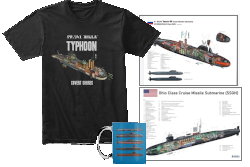![]()

![]()


Original artwork - CLICK for HIGH-RESOLUTION image.
Impressive Submarine Patent of 1913
 When Edward Lasius Peacock patented a "Submarine Or Submersible Torpedo Boat" he was outlining one of the most impressive submarine designs of the period. Peacock was a British Engineer working for the Lake Torpedo Boat Company of Bridgeport, Connecticut, USA. The design, for a tadpole shaped submarine with torpedo tubes pointing in all directions appears crazy. But the Lake company wasn't a crazy house, it was one of the most experienced submarine companies in the world at the time. And the design perhaps isn't as crazy as it first looks.
When Edward Lasius Peacock patented a "Submarine Or Submersible Torpedo Boat" he was outlining one of the most impressive submarine designs of the period. Peacock was a British Engineer working for the Lake Torpedo Boat Company of Bridgeport, Connecticut, USA. The design, for a tadpole shaped submarine with torpedo tubes pointing in all directions appears crazy. But the Lake company wasn't a crazy house, it was one of the most experienced submarine companies in the world at the time. And the design perhaps isn't as crazy as it first looks.
The submarine was to be particularly adapted for coast and harbor defense. Its main feature was a peculiar orb-like hull construction so that a greater number of 'torpedo expulsion tubes' could be carried. These were arranged in an all-round way so that torpedoes could be shot in various directions without the boat having to maneuver. The craft would be anchored in the harbor to provide point defense.
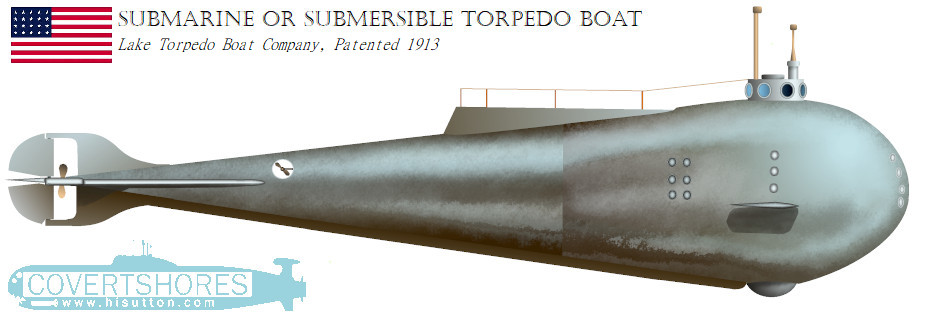
Get The essential guide to World Submarines
This Covert Shores Recognition Guide Covers over 80 classes of submarines including all types currently in service with World Navies.Check it out on Amazon
Two designs were are laid out in the patent. The first has an orb-like forward hull with no less than 36 torpedo tubes. For context the U.S. Navy's L-Class submarine, which Lake Torpedo Boat Company were building from 1914 had four torpedo tubes and four reloads.
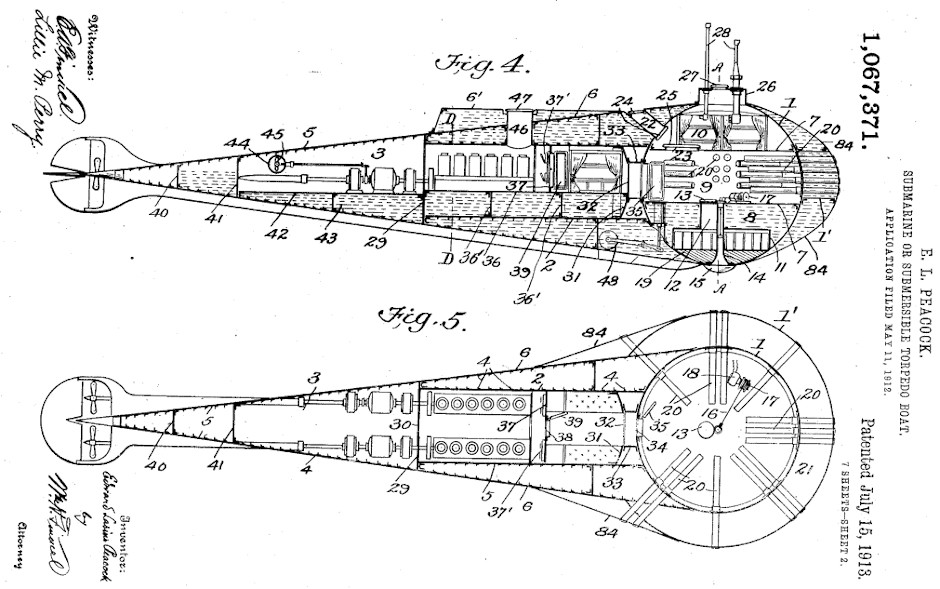
This model has two diesel motors driving two shafts. The sail is a cupola type directly in the center of the orb. A mushroom anchor drops directly out of the bottom of the orb, and a horizontal thruster near the tail is used to orientate it while at anchor.
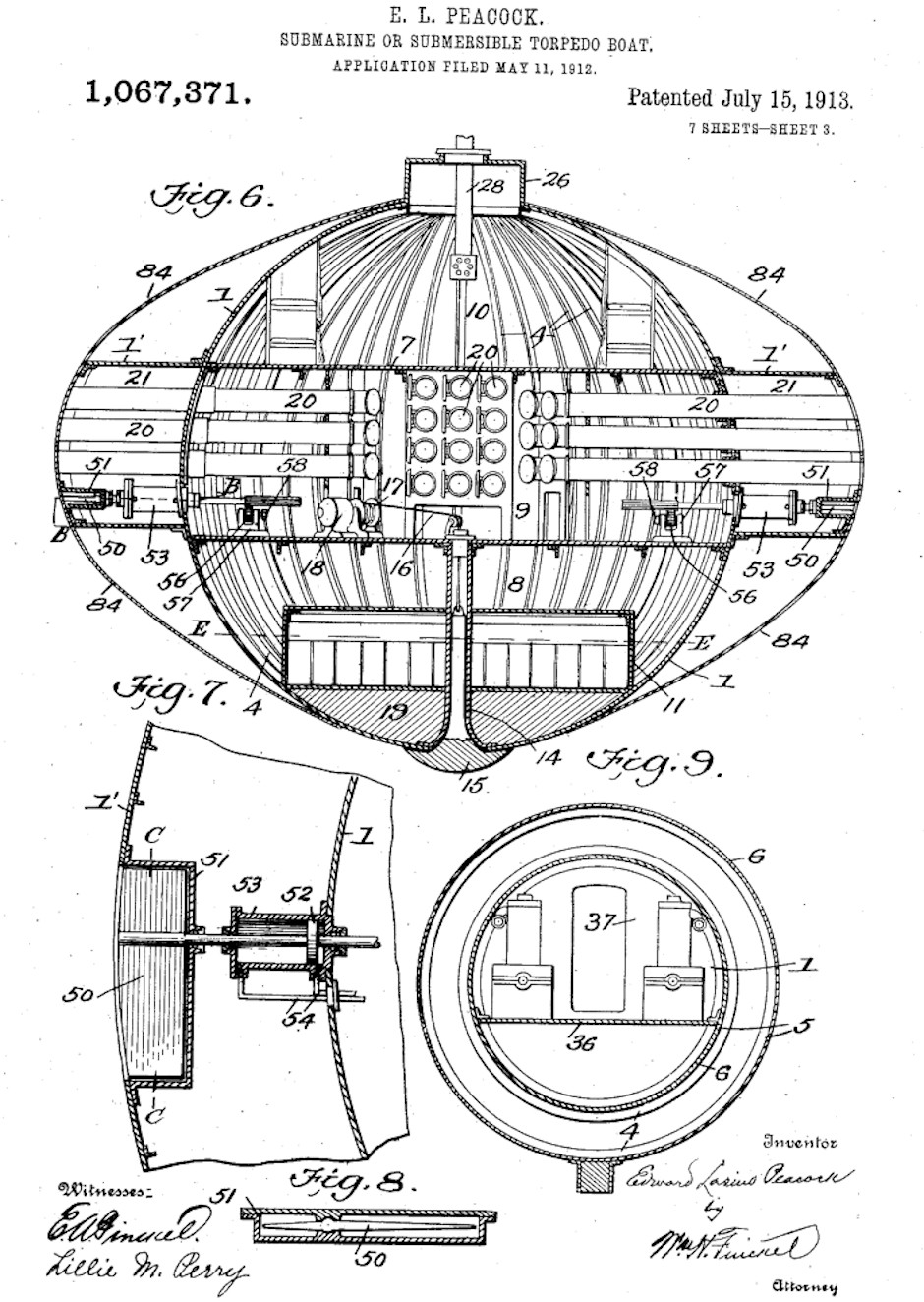
THE book on Special Forces subs Covert Shores 2nd Edition. A world history of naval Special Forces, their missions and their specialist vehicles. SEALs, SBS, COMSUBIN, Sh-13, Spetsnaz, Kampfschwimmers, Commando Hubert, 4RR and many more.
Check it out on Amazon
When you look closely it is applying technology which was known to the inventors who were experts with real-world experience. This is not a concept from an overconfident mad inventor. And it was trying to solve real world problems.
The all-round torpedo tube arrangement was unique, but other attempts at all-round coverage were also being made elsewhere. Today we think of torpedo tubes as all facing forward. The submarine points its bow towards the target and shoots. But back in 1912 several ways of pointing the tube, rather than the submarine, were being tried. Torpedo tubes on turntables above the hull were a thing, most notably on French designs. And broadside torpedo tubes were common on British designs (a hangover from Victorian torpedo boat designs). Stern-facing tubes were common on submarines until the 1960s. So the Lake Torpedo Boat Company was in good company.
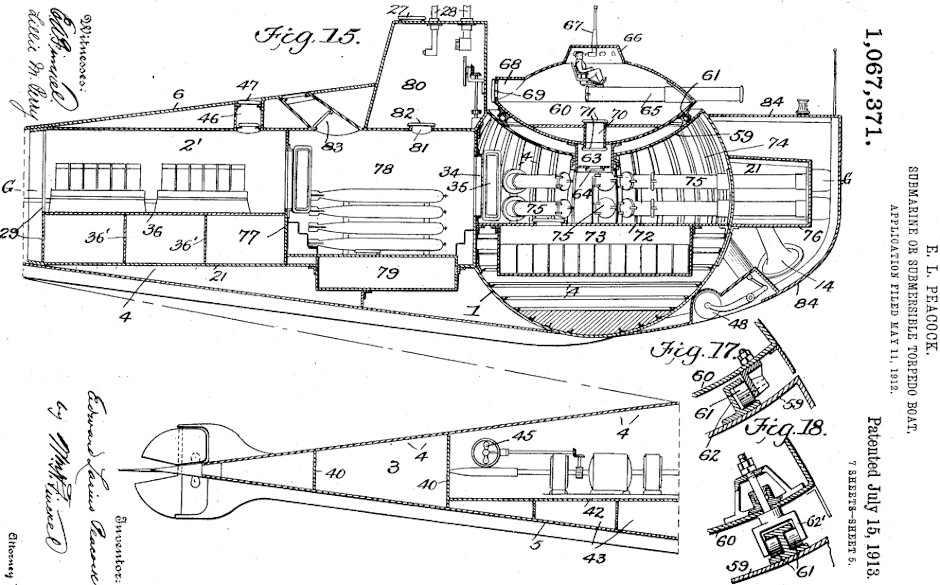
The second design was larger, with four diesel engines. The greater difference was that the top of the orb-compartment was a separate section able to rotate, like a turret. This had two torpedo tubes protruding like gun barrels. In the orb were 16 more torpedo tubes in the all-round arrangement. This was fewer than the first design but at least 8 reloads were also carried, so the total torpedoes was at least 26.
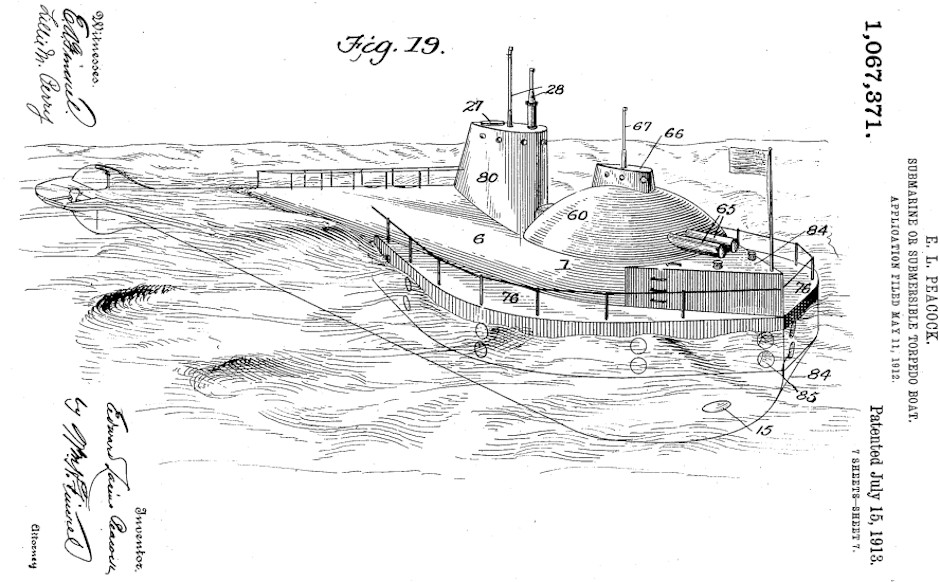
The submarine was never built.
Covert Shores Posters, T-shirts, Mugs
and more featuring exclusive Covert Shores original artworks and design...Available on TeeSpring
This may help cover the overheads of the website
Related articles (Full index of popular Covert Shores articles)

 World war One Type UC-1 U-boat w/Cutaway
World war One Type UC-1 U-boat w/Cutaway





 Nordenfelt steam powered submarines of the 1880s. w/Cutaway
Nordenfelt steam powered submarines of the 1880s. w/Cutaway

 USS Jimmy Carter (SSN-23) Special Mission submarine
USS Jimmy Carter (SSN-23) Special Mission submarine

 Swedish A21 Flundran AIP attack submarine
Swedish A21 Flundran AIP attack submarine

 British SSN(R) next generation Royal Navy SSN
British SSN(R) next generation Royal Navy SSN

 Surcouf Cruiser Submarine w/Cutaway
Surcouf Cruiser Submarine w/Cutaway

 AN-1 submarine aircraft carrier
AN-1 submarine aircraft carrier

 Type-XXIXH stealth U-Boat. w/Cutaway
Type-XXIXH stealth U-Boat. w/Cutaway

 NR-1
NR-1

 Sweden's nuclear powered submarine project (A-11A)
Sweden's nuclear powered submarine project (A-11A)

 Japanese Ko-Hyoteki midget submarine of WW2 - Pearl Harbor attack
Japanese Ko-Hyoteki midget submarine of WW2 - Pearl Harbor attack




